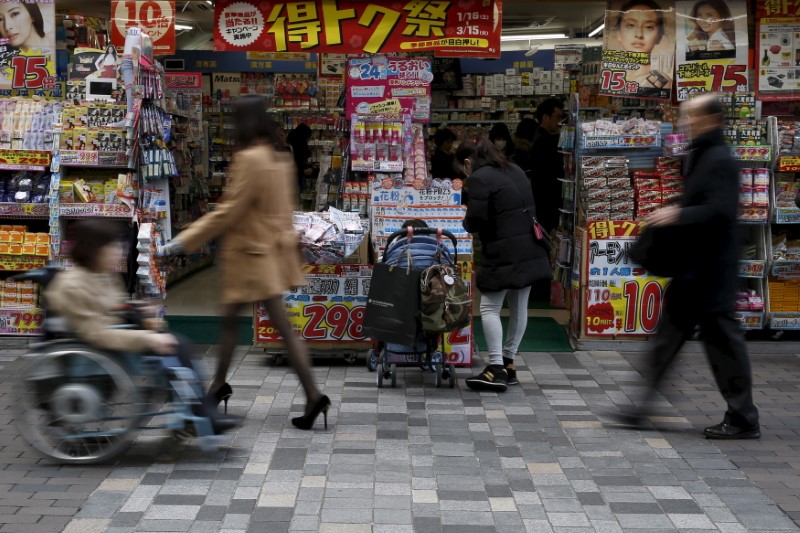 © Reuters. A woman with a baby buggy looks at items outside a discount store at a shopping district in Tokyo
© Reuters. A woman with a baby buggy looks at items outside a discount store at a shopping district in TokyoTOKYO (Reuters) – Japan’s core consumer prices were expected to rise for a ninth straight month in September, a Reuters poll showed, but were still likely to be less than half way to achieving the Bank of Japan’s 2 percent inflation target.
The nationwide core consumer price index (CPI), which includes oil products but excludes volatile fresh food prices, was seen likely to rise 0.8 percent in September from a year ago after a 0.7 percent gain the previous month, the poll of 20 economists found.
Tokyo core consumer prices, available a month before the nationwide data, were expected to be up 0.5 percent in October from a year earlier, the same rate of gain as in September.
Economists say electricity and gasoline costs pushed up consumer prices slightly in September but prices excluding energy related items were subdued.
“Core CPI index is likely to hover below 1 percent supported by energy costs,” said Yoshiki Shinke, chief economist at Dai-ichi Life Research Institute.
“But their positive contribution may start to wane and there is a chance the growth in the index may be capped later this year. The focus is how prices of other items will perform,” he said.
Higher charges for parcel delivery and some food products will be monitored for how they may affect other prices, analysts said.
The government will publish the consumer inflation data at 8:30 Tokyo time on Oct. 27 (2330 GMT Oct. 26).
Bank of Japan Governor Haruhiko Kuroda said recently that inflation remained weak despite the economy’s moderate but steady expansion, which meant the central bank would maintain its massive monetary stimulus for the time being.
Price and wage recovery remain weak as corporations stay wary of passing on some of their accumulated profits to employees, despite the solid economy.
Fusion Media or anyone involved with Fusion Media will not accept any liability for loss or damage as a result of reliance on the information including data, quotes, charts and buy/sell signals contained within this website. Please be fully informed regarding the risks and costs associated with trading the financial markets, it is one of the riskiest investment forms possible.
Source: Investing.com



























